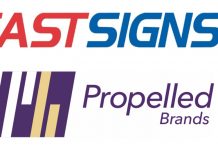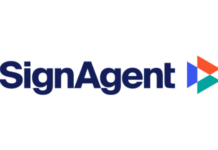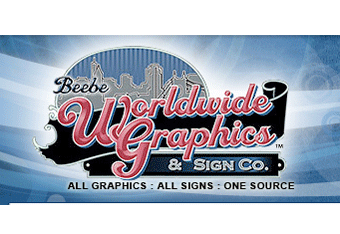 Read Part One of the Job Costing series here.
Read Part One of the Job Costing series here.
In visiting sign shops across the country, one of the most common questions that I have been asked are what other shops are charging for labor. One shop might charge $50 an hour, while another charges $60 per hour.
Using an average rate may not be accurate for your shop, because the overhead for your shop will be much different than the overhead for a competitor’s shop. The productivity rate for two shops can also vary greatly.
The better question is how you can calculate an accurate rate for your shop?
In allocating overhead to direct labor hours as your cost driver (Note: see last month’s column), here’s a simple way to calculate your hourly shop rate:
Add up your shop and administrative costs (overhead) for a particular period, such as a year. You can easily find past costs from the financial documents that your accountant creates for you, such as an income statement (P&L).
Calculate the number of direct labor hours for the same period. This should be easy, if you use labor tickets.
Divide your overhead by the number of direct labor hours.
For example, if your overhead during a month is $6,000, divide that by the hours charged directly to jobs (120). This will equal a $50 an hour shop rate.
You can also use your history of past overhead expenditures and direct labor hour to determine your shop rate, but the shortcoming of using past data is that it may not be indicative of future expenses and direct labor.
To compensate for anticipated changes, you may wish to use this historical information as a reference point. You can forecast future costs and direct labor for the upcoming year, and based on your projections, you can adjust your shop rate.
Activity-based Costing
A shortcoming of applying overhead to direct labor is that a disproportionately high amount of overhead may be applied to low-skilled manual labor jobs.
The result of using an averaged burdened shop rate for all types of jobs is that you could price yourself out of the market for labor-intensive projects.
On the other hand, projects that are run on very expensive equipment, but requiring much less labor, may be underpriced. You might be winning many of these contracts but may not be covering a realistic share of the overhead.
To correct for the shortcomings of applying an averaged burdened labor rate, you may want to consider allocating overhead costs based on specific job activities within your shop. This means that you will need to establish different burdened rates for each type of function or department within your shop.
In other words, you could establish different rates for different types of printers, as well as different rates for weeding and masking computer cut vinyl. Allocation of your expenses could be based on the investment in a particular job station in relation to the overall investment in you shop.
A more accurate (yet much more complex) method of cost allocation is to assign shop and administrative costs to individual departments within your shop. Developing a complicated estimating system such as this requires more time to construct, implement, and maintain. For most sign shops, this is impractical. For larger manufacturers, with distinct departments (each of which have distinct production overhead costs), activity-based costing is often necessary.
The basic departments in graphics manufacturing include design and production art, printing, finishing, and shipping. An activity-based costing system requires that you divide expenses into two categories.
To the primary category, you could assign general expenses that apply to your shop as a whole. You could divide these primary expenses to the different departments within manufacturing based on the square footage utilized by that department.
The next step is to identify those costs that are unique to that department. In a print shop, these costs include the expenses associated with the equipment used specifically in a department. In the print department, these include costs for printing hardware; in finishing, the equipment costs include plotters, die cutters, and laminators.
After adding up the primary and secondary costs for each department for a specific time period, the costs are divided by the number of direct hours charged in that department for the same time period.
Now you can see how complicated this method for cost allocation is.
The advantage is that you assign a more realistic and accurate amount of overhead for a particular activity. More precise allocation of overhead ensures that it is less likely that you will lose money, as well as less likely that you will leave money on the table. It also means that you are less likely to overcharge and price yourself out of the market.
The risk, though, is that anytime a system becomes more complex, you increase the odds that a mistake can occur.
Tracking Overhead
Your shop overhead will either increase or decrease over time, especially if your business is rapidly growing.
As your shop sells more, your variable costs will increase. Utility costs will typically increase, as well as will your expenditures for shop and office supplies and salaries for new personnel.
Discretionary spending on advertising and travel and entertainment often also rises as the good times roll and occasionally can get out of control. The good news is that these discretionary expenses are the easiest to cut when the need arises. As shop and administrative increase, you need to track your overhead expenditures and how it affects your shop rate.
Here is an actual example of how changes in overhead and direct labor hours affected the hourly shop rate for one print provider during the first three years of operation:
Year One: $600,000 annual overhead divided by 12,000 direct labor hours equals $50 hourly labor cost.
Year Two: $800,000 annual overhead divided by 18,000 direct labor hours equals $44.45 hourly labor cost.
Year Three: $1,020,000 annual overhead divided by 28,800 direct labor hours equals $35.42 hourly labor cost.
In estimating labor hours for any job, you want to separate it into the various activities or cost pools involved in its production. For a digital printer, these discrete activities might include: design and production art, sheeting (of vinyl material), printing, laminating, plotter cutting, and packing and shipping.
The second step in costing the job is to estimate how much time is required for each activity. By totaling the number of hours for the different activities and multiplying the total by the shop rate, you have calculated your labor cost for the job. If you are producing a number of the same graphic, divide the total by the number of units produced.
Pricing
It is important to remember that costing and pricing are different.
Estimating your costs in producing a job just covers your expenses for the project. Just as you and your employees deserve a paycheck, your business, as a separate entity, needs to realize a return on investment, regardless of whether you are the sole owner or you have investors.
Costing provides you with the foundation for determining a competitive selling price. After you estimate your costs, you can calculate your selling price—one that provides your business with an acceptable profit and allows you to remain profitable in your market.
Remember that there is a difference between the estimated cost (which just covers your direct and indirect costs) and your selling price. The easiest way to establish a selling price is to calculate all of your direct costs along with an allocated portion of your overhead and add in a percentage for profit.
Suppose, for example, that you would like your business to add 25 percent profit to your costs on the job. To do that you divide $486.60 in costs by .75 to achieve a selling price of $648.80.
Job Closeout
As a sign maker, you understand better than any outsider what your direct and indirect costs are. Based on your experience, you have the ability to develop costing standards particular to your business.
After you complete your jobs, you need to compare your estimates with your actual costs from a selection of key projects in a closeout session with your key employees. From that comparison, you can review the variances and reevaluate your standards.
For an accurate comparison, you must maintain good records on material pulled for a job and production hours charged to specific activities, such as design and production art, machine set up, printing, laminating, and plotter cutting.
A careful comparison between the estimate and actuals will reveal any shortcomings in estimating standards or production planning. The closeout process should also uncover any deficiencies in purchasing practices and production problems.
Periodically you should also recalculate how any changes in your overhead costs and production volume affects your hourly shop rate.
Conducting regular job closeout sessions gives you an opportunity to uncover any variances between your estimates and the actual material used and actual recorded labor in production. If major discrepancies are revealed, you need to determine the source of the inaccuracies.
If you are not recording material used, you need to institute some type of tracking system (such as using a materials requisition sheet). From your time cards you will also need to compare the actual number of hours charged to a job versus your estimated labor.
If more material or labor was used than projected, you need to determine if there was a problem encountered or if your estimate was instead unrealistic.
From your review of the job, you may determine that you need to make changes to your estimating procedures (such as adjusting your scrap rate or modifying your labor standards).
On the other hand, if your estimate was reasonable, the job closeout may reveal problems in manufacturing.
By Jim Hingst
Photos: Shutterstock.com









